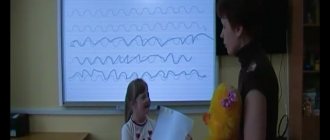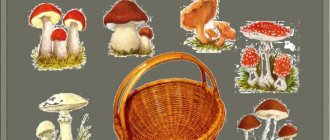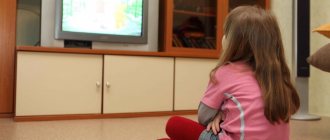PLAN FOR A GAME WITH BUILDING MATERIAL “FARM”
OUTLINE OF THE GAME WITH BUILDING MATERIAL:
Group
III mixed age
Subject
"Farm"
Type of design:
design on a given topic
Teacher Mikheeva Anna Vladimirovna
Tasks:
- educational: Teach independently, select the necessary parts in accordance with the nature of the building and carry out the construction according to the teacher’s model.
— developing: developing in children the ability to use construction table material and act with it in a variety of ways.
- educational: Develop friendly relationships in the game
Methods and techniques for managing gaming activities:
- verbal: vocabulary work
— visual: building material
— practical: playing with the building
Playing materials and equipment:
Teacher
For each child
Are common
Tabletop building material (bars, cubes, arches), set of Farm toys.
Tabletop building material (bars, cubes, arches), set of Farm toys.
Tabletop building material (bars, cubes, arches), set of Farm toys.
If, during the course of the lesson, children will move around the group room, it is advisable to draw a plan for the placement of the necessary play equipment.
Preliminary work:
Conversation about pets
Individual work
: Playing with different toys representing pets and babies. What animals are called domestic? Why? Who saw a cow, horse and other animals in the village? What are the names of their cubs?
Progress of the game (tactics of game interaction with children):
Start of the game (introduction to the game situation)
Introduction to game rules and actions
Game problem situations for game development.
Completing the game (reflection)
The teacher gives the children a set of Farm toys and invites them to play.
Draws attention to the fact that the animals need to be provided with a safe place so that they do not run away and no one harms them, leading the children to the conclusion that it is necessary to build a fence around the farm.
The teacher suggests populating the farm with small animals (piglets, sheep, poultry) and checking whether the fence is high enough. Then large animals (cows, horses) move in.
The teacher shows a sample of a fence superstructure (the cube alternates with an inverted arch, placed close to each other on top of a fence made of bars).
The teacher asks questions about the farm and offers to play with the building.
Children looking at a set of toys
Children themselves choose the building material (bars) and build a fence by placing parts close to each other.
Children come to the conclusion that the fence is not high enough
Children finish construction
Playing "Farm"
The children became interested in the game and listened with pleasure to the teacher
Children build their own fence
The game continues by fixing the fence
The children learned how to build a fence for animals. Play around the building
Analysis of the game with building materials
Analysis of observation of children's play activities and the role of the teacher
- Compliance of the tasks with the age characteristics of the children.
- What preparatory work was carried out before the game, was it expedient?
- What building material was used in the game (specially created, natural, auxiliary).
- Methods and techniques of stimulation and motivation to play.
- The effectiveness of methodological techniques used during the game and for its completion.
- What type of construction was used during the game, its age-appropriateness, feasibility:
- on a given topic;
- by design;
- according to the conditions;
- "according to models".
- Place and time for the game.
- Children's associations.
- What conditions were created to play around with the buildings?
- Educational orientation of the game.
Analysis of construction game management techniques used by the teacher.
1. Did the game bring joy to the children?
2. Reasons for the achieved result - preparation for the game:
— planning the game (does the program content correspond to the age and level of development of children, is the complex management of the game reflected in the program content;
— creation of conditions (what time is allocated in the daily routine, is there a special place in the group, how is the game equipped);
— preparation of children;
— on whose initiative the game arose;
— whether there was a preparatory period of play in accordance with age;
— are children independent during play or does the game develop with the participation of the teacher;
- what was the guidance of the game on the part of the teacher (techniques, directions);
— did the teacher suppress the children with his interference?
- children’s activities in play;
— how the task of developing creativity, initiative, and imagination in children was solved;
- how the game was completed - organized or unexpected;
— how the analysis was carried out.
3. How would you direct this game?
Card index of construction games for the middle group
Yulia Mikhailovna Voronina
Card index of construction games for the middle group
September
1.“Building a house for a cat, a dog and a goat”
Goal: Develop children's ability to build a house. Learn to build in the required sequence. Promote cooperative play
2."Animal pen"
Goal: Learn to build from vertically placed bricks. Foster careful handling of construction. Activate vocabulary: brick, pen.
3."Tower, bridge"
Goal: Learn to build simple buildings; consolidate building techniques from the bottom up.
4."The High and Low Tower"
Purpose: To consolidate the names of building materials, the concepts of “high - low”
,
“more is less”
, the ability to build towers of different sizes and colors, maintaining proportions, using prisms to decorate
the structure .
October
1."House for a Bear"
Goal: To develop the ability to build toy houses, focusing on a model; cultivate respect for the construction profession.
2."Let's build a path for the car"
Goal: Develop skills: build a path, placing bricks next to each other with short edges, distinguish parts of buildings by size, build according to your own plans, interact in games.
3."Doll bed"
Purpose: Show children on a sample model that the building contains the necessary parts; continue to train children to build according to the model proposed by the teacher.
4. "Building a truck, roads"
Goal: To consolidate the ability to tightly lay bricks flat to each other with the narrow short side (road)
.
Place the cube firmly and evenly on the second brick (machine)
.
November
1."Gate for Aibolit car"
Goal: Learn to build a gate from two vertically standing bricks, on which another brick is placed
2."The doll has a housewarming party"
Goal: To consolidate the skills and abilities of working with building materials, teach them to play with buildings, and enrich the experience of children. Construction of furniture, rooms in various ways.
3."Table and chair"
Goal: To develop the ability to select materials for furniture in accordance with the desired size; improve design skills
4. "Town for Dolls"
Goal: Continue to create buildings according to the general plot. To develop the ability to design at will , to cultivate the desire and ability to build calmly together
December
1."Ladder for the turtle"
Goal: Continue to teach children to create buildings, put parts on top of each other and place them next to each other; recognize and name building materials and buildings.
2. “Narrow bench for Bunny - Long Ear, wide bench for Mishutka”
Goal: Learn to build a narrow bench from two bricks and a plate and a wide bench from four bricks and two plates.
3."Bridge for pedestrians"
Goal: Continue to learn two ladders and make an overlap (put a plate on top, play with the structure. Vocabulary: ladder, height, on top, bridge, next to, plate.
4."Different Cars"
Goal: To strengthen children's understanding of the color and name of building parts, construction . Teach children to compare buildings and notice their differences.
January
1.“Building a steamship, a boat. The doll's trip to visit"
Goal: To strengthen children’s ability to place bricks tightly together, placing them on the long narrow side, depicting a boat or steamship. Distinguish the details of the bow and stern.
2. "Let's build a doll shop"
.
Goal: To consolidate the ability to build a store from cubes and bricks, to bring the job to the end, to cultivate friendly relations in the game.
3. "Zoo for wild animals"
.
Goal: To consolidate skills in joint activities with the teacher (build cages for animals)
; continue to learn how to play around with your construction.
4. "Zoo"
.
Goal: To consolidate the ability to build houses for different animals from cubes; develop respect for animals.
February
1. "Let's build a house for animals"
.
Goal: Develop memory, speech; Encourage children to create design by adding other details.
2. "Garage"
.
Goal: To consolidate the ability to build from parts of a large builder; beat the building.
3."Let's build a house for a bunny"
.
Goal: To develop children’s constructive skills , the ability to demonstrate how to build simple structures , and enjoy the results; consolidate the names of details and verb forms in speech; develop motor skills, the ability to correlate movements with words.
4."Let's build a house for the bear"
.
Goal: To develop children’s constructive abilities , to teach them to correlate the size of a building with the size of an object; consolidate knowledge about construction details; develop the planning function of speech.
March
1. "Terem for Animals"
.
Goal: To develop children’s constructive skills , learn to compare buildings with the size of an object, learn to pronounce a sequence of actions in speech.
2. "At the request of the children"
.
Goal: Improve children's skills when working with construction sets , learn to decorate the design , play with it; bring pleasure from games and collective activities.
3."Garages for cars"
.
Goal: To consolidate knowledge of the names of building materials; cultivate the desire to build together, amicably.
4."House for Dwarves"
.
Goal: To consolidate the ability to design objects (houses)
in accordance with certain conditions.
April
1."Furniture for a doll"
.
Goal: To develop children’s constructive abilities , the ability to create simple buildings; consolidate knowledge about furniture and its purpose.
2.“Construction of houses for kittens of different sizes”
.
Goal: To consolidate knowledge of the concepts “big - small”
;
develop constructive skills , speech.
3. "Trucks"
.
Goal: Develop children's constructive abilities , fine motor skills of fingers, learn to build cars from LEGO construction sets
; learn to play without conflicts, in harmony.
4."Garages for transport"
.
Goal: To teach children to organize themselves into groups and unite with a common plot, to teach them to play without conflicts, in harmony. Offer small toys to play with.
May
1."Two-storey house"
.
Goal: Look at illustrations with multi-story and two-story houses, develop the ability to independently enclose a space when building a house, and build on the upper floor.
2. " Designing according to your own design"
Goal: to encourage children to rebuild this or that building (arrange, expand, lengthen)
creating a game situation.
3. "Dog Kennel"
Goal: Learn to make buildings according to a verbal description and a diagram
4. “House with a fence
Goal: To teach children to follow the construction plan, take into account color, shape, size







